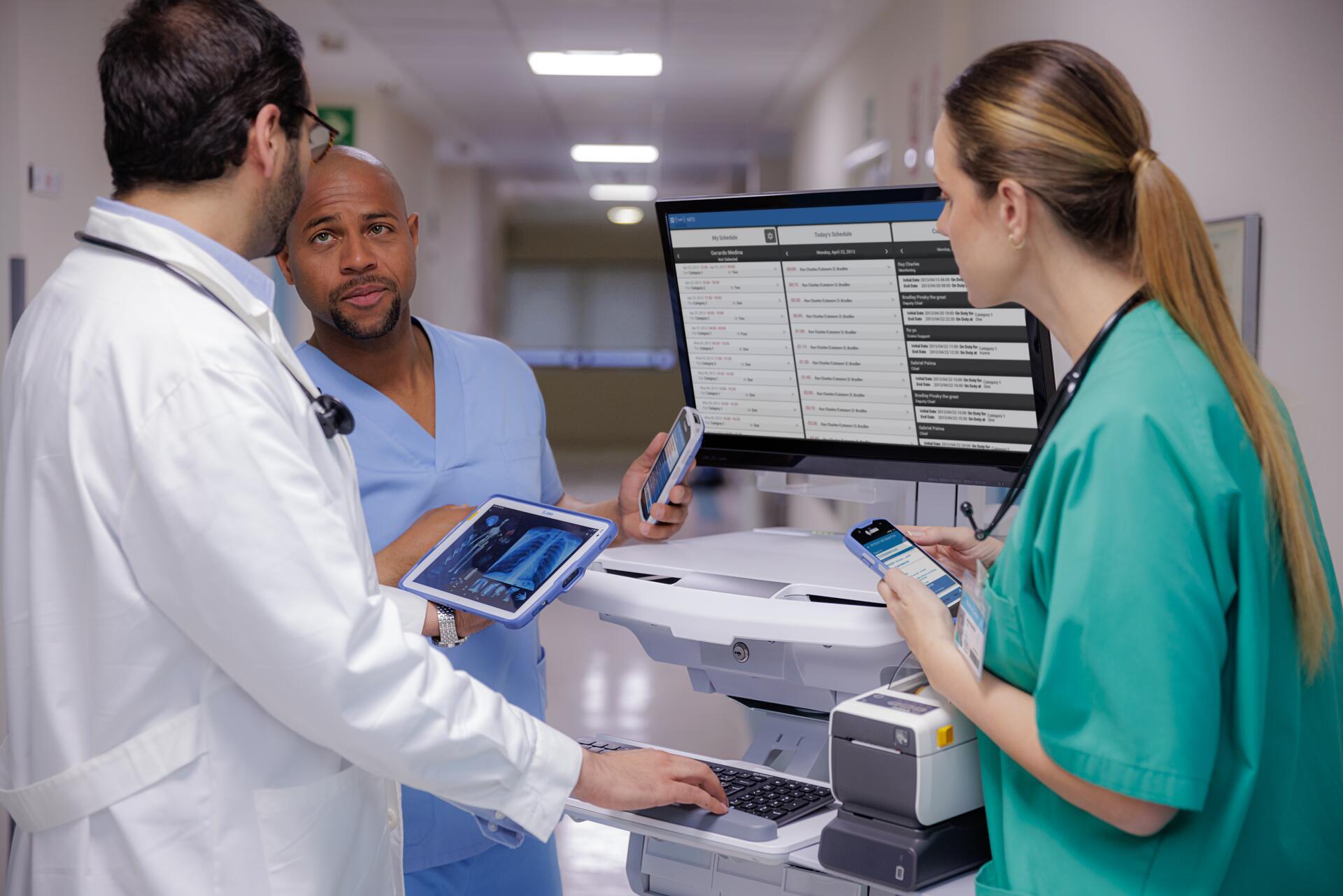AIDC & Electronic Health Records Over the Past Decade
In the past decade, healthcare IT underwent rapid growth as it was a top spending priority for hospital executives. As we head into a new decade, it is important to revisit the changes and evolution that has taken place in healthcare. With each year, advancements in medicine and medical practices improve patient care and quality of life. A central goal of many hospitals was moving toward electronic health records (EHR). Unlike paper-based records, EHR gave staff medical staff a unified and accessible platform for patient data. The value of electronic data was immense as organizations could use it along with analytics to create better workflows and efficiency within organizations. Between 2009 and 2013 the number of U.S. hospitals using an EHR grew from 16% to 80%. 
Growing in tandem with EHR were devices for automatic identification and data capture (AIDC). AIDC devices allow patient data to be captured instantly and used to communicate with and update electronic records. Doing so in medical processes dramatically reduces error, increases staff efficiency and promotes a higher quality of care. Furthermore, it has greatly improved the quality and accuracy of patient data. AIDC and electronic records have paved the way for data-driven medical decisions as well as the prevalence of data sharing in healthcare.
Benefits of AIDC and Electronic Health Records
Due to the wider implementation of EHR and AIDC in the 2010s, medical records are more accessible, manageable and accurate. EHR and AIDC work in conjunction to make sure patient records are accurate, up-to-date, and consistent across organizations. For this reason, they are critical in preventing patient mistreatment and medication error that leads to further health complications.
Altogether, electronic records and unified data have improved the quality of screenings for breast cancer, diabetes, and colorectal cancer. Additionally, there have been 63% fewer medication errors reported and a 6% increase in the use of preventative medicines.
Looking Forward in Healthcare
The past decade has certainly created some beneficial changes in healthcare IT. Many data collection devices now feature disinfectant-proof casings and rugged designs specifically built for healthcare. In particular, Honeywell mobile devices are designed for a variety of point-of-care applications like wristband scanning, specimen collection, and correct dosage administration. Now healthcare IT has incorporated RFID and RTLS systems to track equipment and keep real-time inventory. The past decade was a period of beneficial change for healthcare IT with automatic data collection and the digitization of patient records. Going forward, it will be interesting to see the development in healthcare IT with the incorporation of AI, robotics, and more advanced means for data collection.